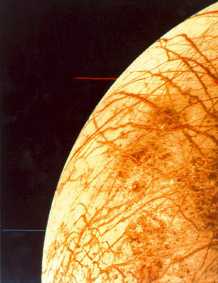This is an image of Europa.
Click on image for full size
NASA
Can there be Life in the Environment of Europa?
At first glance Europa may seem unfriendly to
life as we know it on earth.
Like other icy moons, Europa is small, with no atmosphere to speak of, with direct exposure to space and the charged particle environment of Jupiter's magnetosphere. With no atmosphere there is no buffer between the surface and space itself, therefore the surface of Europa extremely cold.
Nevertheless, the interior of Europa may have been warm enough at one time to contain a liquid layer just under the surface. On Earth, we know that there are some creatures which can survive in an environment of very cold water, such as under the ice of the north pole.
This means that, if the conditions are just right, there may be living creatures on Europa under the icy surface!
You might also be interested in:
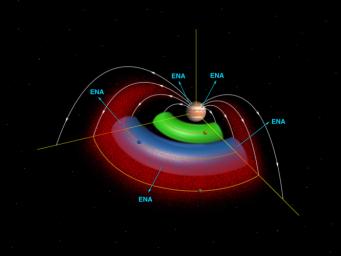
The Galileo mission discovered an amazing thing. Europa has its own atmosphere, although it is very, very thin. This atmosphere is created when fast moving molecules in Jupiter's magnetosphere hit the
...more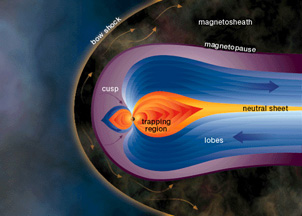
Jupiter's magnetosphere is a unique object in the solar system. It is the biggest object in the entire solar system. Not only is it big enough to contain all of Jupiter's moons, but the sun itself could
...more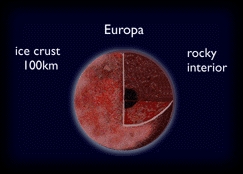
The diagram shows possibilities for the interior structure of Europa. There is a core of rocky material buried inside, overlain with ice of various phases. The diagram shows that there may be an ocean
...more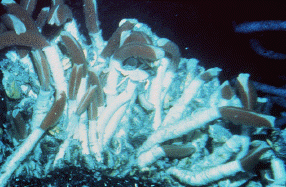
On Earth, we know that there are many types of living things that are able to live in difficult environments. The picture to the left shows an example of some of these creatures. These are tubeworms that
...more
Jupiter's atmospheric environment is one of strong gravity, high pressure, strong winds, from 225 miles per hour to 1000 miles per hour, and cold temperatures of -270 degrees to +32 degrees (freezing temperature).
...more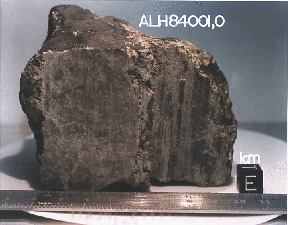
In July, 1996, it was announced that Dr. David McKay, along with a team of scientists at Johnson Space Center (a division of NASA), had discovered possible fossils of bacteria in an ancient rock from Mars.
...more
Saturn's atmospheric environment is one of strong gravity, high pressure, strong winds, from 225 miles per hour to 1000 miles per hour, and cold temperatures of -270 degrees to +80 degrees. With winds
...more


